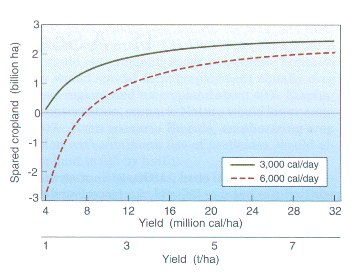 Figure 11.1. The sparing for Nature of a reference area of 2.8
billion ha of cropland by farmers raising yields for
ten billion people consuming 3,000 or 6,000 cal/day.
Figure 11.1. The sparing for Nature of a reference area of 2.8
billion ha of cropland by farmers raising yields for
ten billion people consuming 3,000 or 6,000 cal/day.
A tally (Sanchez et al., 1990[SPS90], 213) of strategies, mostly futile but one hopeful, for lessening deforestation is a good place to start the search for a scenario for successfully sparing land for Nature. A strategy of economic development takes too long. Encouraging migration elsewhere cannot deflect immigrants. Nature reserves cannot stop the hungry from clearing plots. And reserves for extractive but sustainable forestry support few people. On the other hand, maintaining or restoring productivity to eliminate the need to abandon land already cleared holds out hope. The potential for maintaining productivity may even exist in Amazonia: Experiments for 8 yr on soil representing about half the Amazon basin, in fact, grew undiminished yields of about 7 t/ha; a decade later, the World Bank reported that the productivity has continued for 40 crops and 17 yr (Sanchez et al., 1982[SBVN82]; World Bank, 1992[Ban92], 135).
Numbers can impart a misleading aura of accuracy. ``Mega-trend analysis focusing on qualitative changes and major directions of influence is more important to strategic policy than seemingly precise model predictions, which are usually bound to fail." (Nijkamp and Soeteman, 1988[NS88]) And I have written more about major directions than about precise numbers. In the end, however, I am vague if I do not set down some quantities and scenarios answering, ``How much land can ten billion people spare for Nature?"
The setting for my commedia dell 'a rte about area spared is
The cast of ten billion consumers determine
And characters called farmers grow
I graphed the outcome of my play in Figure 11.1. The area of cropland spared rises from a negative quantity, when people consume much and hectares yield little, toward the ceiling of 2.8 billion ha of the reference area. When farmers grow more than 24 Mcal or 6 t/ha, they use little cropland, sparing much of the 2.8 billion ha whether people consume 3,000 or 6,000 cal/day.
 Figure 11.1. The sparing for Nature of a reference area of 2.8
billion ha of cropland by farmers raising yields for
ten billion people consuming 3,000 or 6,000 cal/day.
Figure 11.1. The sparing for Nature of a reference area of 2.8
billion ha of cropland by farmers raising yields for
ten billion people consuming 3,000 or 6,000 cal/day.
To support ten billion consuming 3,000 cal/day, agriculture averaging 4 Mcal/ha would spare none of the 2.8 billion ha of the reference area (Figure 11.1.). If the ten billion consumed 6,000 cal/day, agriculture would not only spare none of the 2.8 billion ha, it would require about 2.8 billion ha of other land, which the figure depicts as a negative sparing. On the other hand, an agriculture that produced an average 16 Mcal/ha or 4 t/ha of yield would spare much land. An agriculture averaging 16 Mcal/ha would support the ten billion consuming 6,000 cal/day on the present cropland area, sparing half the reference area. If the ten billion consumed only 3,000 cal/day, 16 Mcal/ha would support them on even less cropland, sparing much of the reference 2.8 billion ha for Nature.